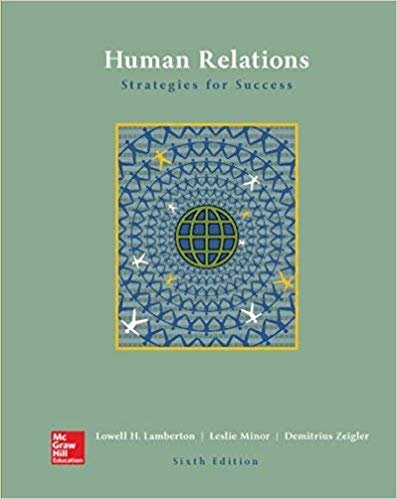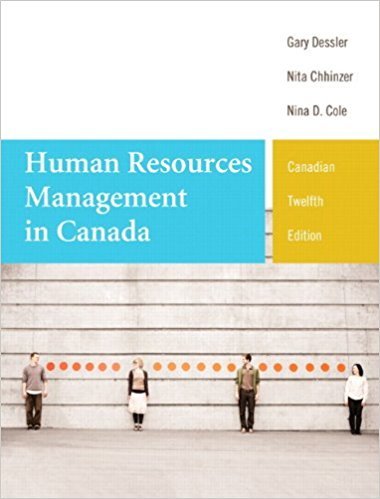Human Relations Interpersonal Job-Oriented Skills 12th Edition DuBrin Test Bank
Human Relations: Interpersonal Job-Oriented Skills, 12e (DuBrin)
Chapter 12 Helping Others Grow and Develop
12.1 Multiple Choice Questions
1) A major characteristic of nurturing people is that they
- A) dislike most people.
- B) are late bloomers in their career.
- C) promote the growth of others.
- D) conduct serious negotiations over lunch.
Answer: C
LO: 1
AACSB: Interpersonal relations and teamwork
2) A toxic person in the workplace is likely to
- A) ask for help with his or her deficiencies.
- B) look to help other people with their deficiencies.
- C) focus on the positive in dealing with other people.
- D) focus on the negative in dealing with other people.
Answer: D
LO: 2
AACSB: Interpersonal relations and teamwork
3) The buddy system in a job setting refers to a pair of people
- A) sharing information that could affect their careers.
- B) recommending each other for good assignments.
- C) sharing career expenses and clothing.
- D) ganging up to downgrade the boss.
Answer: A
LO: 2
AACSB: Interpersonal relations and teamwork
4) In a mentoring relationship, the mentor
- A) trains the protégé to be his or her replacement.
- B) gives support and career advice to a less experienced person.
- C) requests that the protégé recommend him or her for promotion.
- D) assumes administrative responsibility for the protégé.
Answer: B
LO: 2
AACSB: Interpersonal relations and teamwork
5) Travis, age 24, serves as a reverse mentor to his boss Clarissa, age 56, when he
- A) invites her to his backyard barbeque with his family and friends.
- B) coaches her on the latest technology in their field.
- C) asks for her to help him improve his financial situation.
- D) suggests that she transfer to a different division of the company.
Answer: B
LO: 2
AACSB: Interpersonal relations and teamwork
6) Rachel participates in e-mentoring when she
- A) sends e-mails to hundreds of employees to ask for help with problems.
- B) gives advice on the best use of e-mail and social media Web sites to coworkers.
- C) uses e-mail regularly to ask for and receive advice from her mentor.
- D) uses posts on Twitter to poke fun at the mentor.
Answer: C
LO: 2
AACSB: Application of knowledge
7) An important characteristic of the new style of mentoring is that it is often
- A) short term and informal.
- B) long term and formal.
- C) based on the assumption that the person being mentored will stay at the company for most of his or her career.
- D) based on the assumption that the person being mentored is impatient to be promoted.
Answer: A
LO: 2
AACSB: Application of knowledge
8) Which one of the following is the most likely to be the behavior of an effective mentor?
- A) sharing a challenging assignment with the protégé
- B) coaxing the protégé into potentially harmful situations
- C) avoiding a personal friendship with the protégé
- D) solving problems for the protégé
Answer: A
LO: 2
AACSB: Application of knowledge
9) Which one of the following is the least effective mentoring behavior?
- A) counseling with the protégé
- B) being a role model for the protégé
- C) helping the protégé “learn the ropes”
- D) solving problems for the protégé
Answer: D
LO: 2
AACSB: Application of knowledge
10) A recommended starting point in being an effective coach is to first
- A) criticize coworkers so they will feel the need to be coached.
- B) build positive relationships with coworkers before coaching them.
- C) dig up some negative information about coworkers.
- D) be assigned to the same project as the person or persons to be coached.
Answer: B
LO: 3
AACSB: Interpersonal relations and teamwork












Reviews
There are no reviews yet.